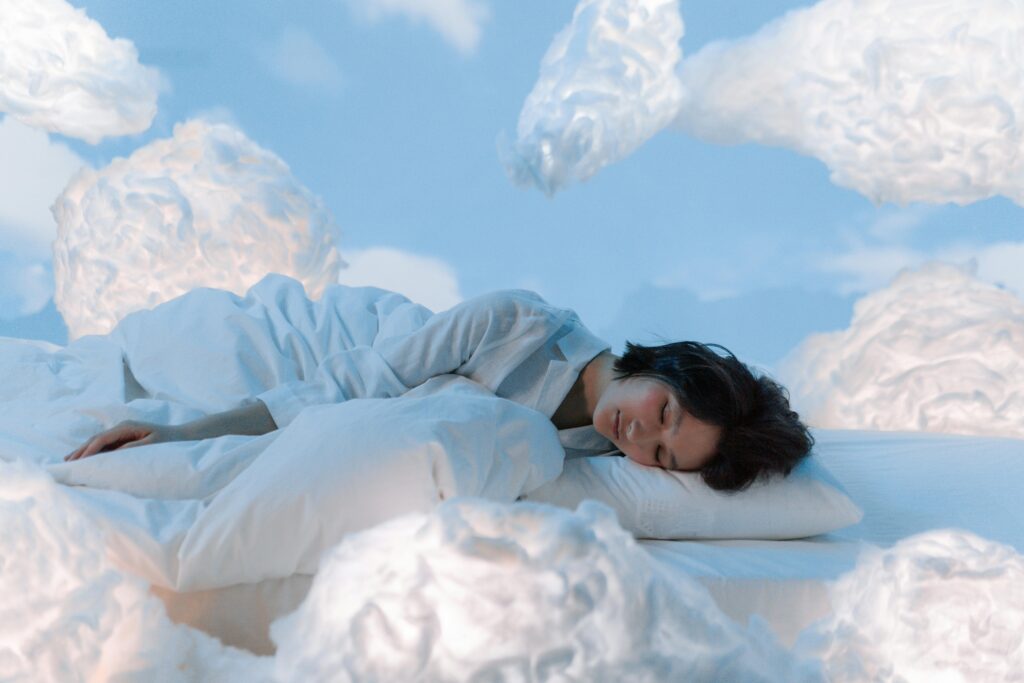This post is also available in Dutch.
Imagine showing up naked to a meeting, losing all your teeth, or fighting supernatural enemies. These scenarios might seem absurd in waking life, yet they become surprisingly likely once you drift into your dreams. Why does our brain come up with these bizarre stories every night?
Use it or lose it: The plasticity of the brain
To answer this question, we need to understand a fundamental principle of the brain: its inherent plasticity. The brain constantly adapts to our experiences – it continuously reorganises, restructures and rewires.
Plasticity makes learning and development possible. It also comes with a trade-off: If we do not engage a certain part of our brain enough, it will eventually be taken over by another function. Even the areas of the brain processing sensory information, like smell, hearing, or vision, can be subject to this restructuring.
When a sensory modality loses function – for example, when individuals become blind – it will increasingly be taken over by a neighbouring sense. This explains how blind people often have remarkable hearing abilities.
The reorganisation of the brain can happen surprisingly quickly. In an experiment, participants were blindfolded. With no visual input, it only took 45 minutes for the visual system to show signs of being overwritten by another function. This effect immediately reversed when participants took their blindfolds off.
Dreaming protects the visual system
According to Eagleman and Vaughn, this vulnerability of our visual system points us to a problem: Due to the planet’s rotation, we spend 12 hours of each day in complete darkness. While night-time has no impact on our ability to smell, touch, or hear, it renders our visual sense essentially useless. The consequence: the visual system is at strong risk of being replaced.
The vivid images we see during our dreams serve one important purpose: Dreaming allows our visual sense to resume activity even when it is dark. Thereby, it can protect itself from being taken over by another function.
Hallucinations under limited visual input
Evidence for this theory comes from other situations in which the visual system receives little to no input.
Criminals punished to solitary confinement – spending days to weeks in near-total darkness – report hallucinating vivid scenes in front of them.
The same kinds of visions happen in so-called sensory deprivation tanks – pods that allow people to float in saltwater, surrounded by complete darkness.
These hallucinations could be the same type of mechanism that happens when we dream – keeping the brain active when external visual input is missing.
Plastic brains dream more
Other evidence shows a direct connection between brain plasticity and dreaming: As brain plasticity decreases with age, so does the amount of time we dream. Similarly, when looking at other species, those with more plastic brains dream more.
The brain’s clever trick
So, why do we dream? Dreams might serve a role in preserving our brain’s visual system, keeping it active and thereby protected during long hours of darkness.
The next time you wake up from a bizarre dream, remember: it might be your brain’s trick to keep your vision sharp, even when the lights are out.
Credits
Author: Charlotte Sachs
Buddy: Hilde Althof
Editor: Vivek Sharma
Translation: Dirk-Jan Melssen
Editor translation: Lucas Geelen
Photo by Ron Lach on Pexels
